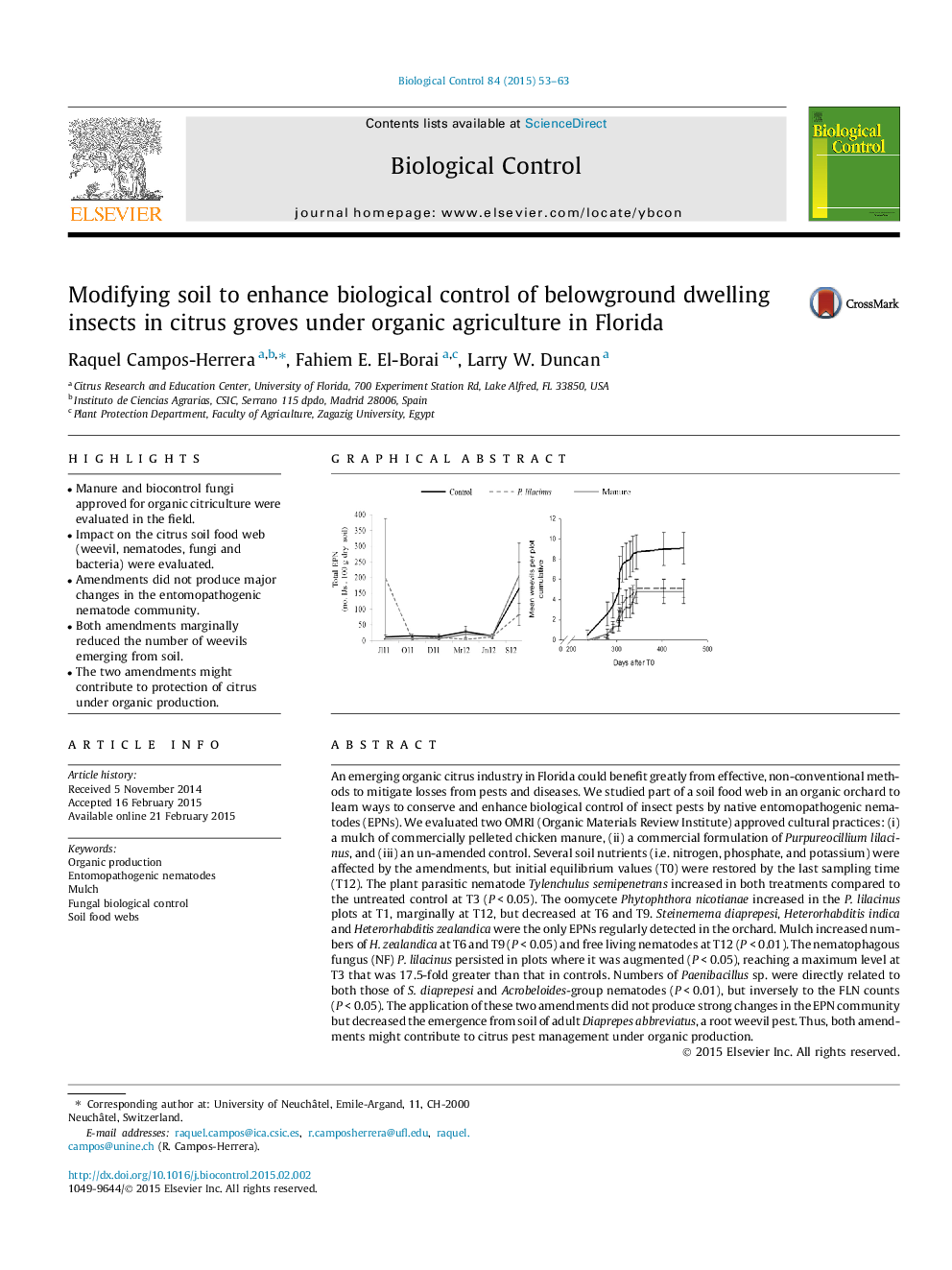| کد مقاله | کد نشریه | سال انتشار | مقاله انگلیسی | نسخه تمام متن |
|---|---|---|---|---|
| 4503796 | 1624250 | 2015 | 11 صفحه PDF | دانلود رایگان |
• Manure and biocontrol fungi approved for organic citriculture were evaluated in the field.
• Impact on the citrus soil food web (weevil, nematodes, fungi and bacteria) were evaluated.
• Amendments did not produce major changes in the entomopathogenic nematode community.
• Both amendments marginally reduced the number of weevils emerging from soil.
• The two amendments might contribute to protection of citrus under organic production.
An emerging organic citrus industry in Florida could benefit greatly from effective, non-conventional methods to mitigate losses from pests and diseases. We studied part of a soil food web in an organic orchard to learn ways to conserve and enhance biological control of insect pests by native entomopathogenic nematodes (EPNs). We evaluated two OMRI (Organic Materials Review Institute) approved cultural practices: (i) a mulch of commercially pelleted chicken manure, (ii) a commercial formulation of Purpureocillium lilacinus, and (iii) an un-amended control. Several soil nutrients (i.e. nitrogen, phosphate, and potassium) were affected by the amendments, but initial equilibrium values (T0) were restored by the last sampling time (T12). The plant parasitic nematode Tylenchulus semipenetrans increased in both treatments compared to the untreated control at T3 (P < 0.05). The oomycete Phytophthora nicotianae increased in the P. lilacinus plots at T1, marginally at T12, but decreased at T6 and T9. Steinernema diaprepesi, Heterorhabditis indica and Heterorhabditis zealandica were the only EPNs regularly detected in the orchard. Mulch increased numbers of H. zealandica at T6 and T9 (P < 0.05) and free living nematodes at T12 (P < 0.01). The nematophagous fungus (NF) P. lilacinus persisted in plots where it was augmented (P < 0.05), reaching a maximum level at T3 that was 17.5-fold greater than that in controls. Numbers of Paenibacillus sp. were directly related to both those of S. diaprepesi and Acrobeloides-group nematodes (P < 0.01), but inversely to the FLN counts (P < 0.05). The application of these two amendments did not produce strong changes in the EPN community but decreased the emergence from soil of adult Diaprepes abbreviatus, a root weevil pest. Thus, both amendments might contribute to citrus pest management under organic production.
Figure optionsDownload as PowerPoint slide
Journal: Biological Control - Volume 84, May 2015, Pages 53–63
